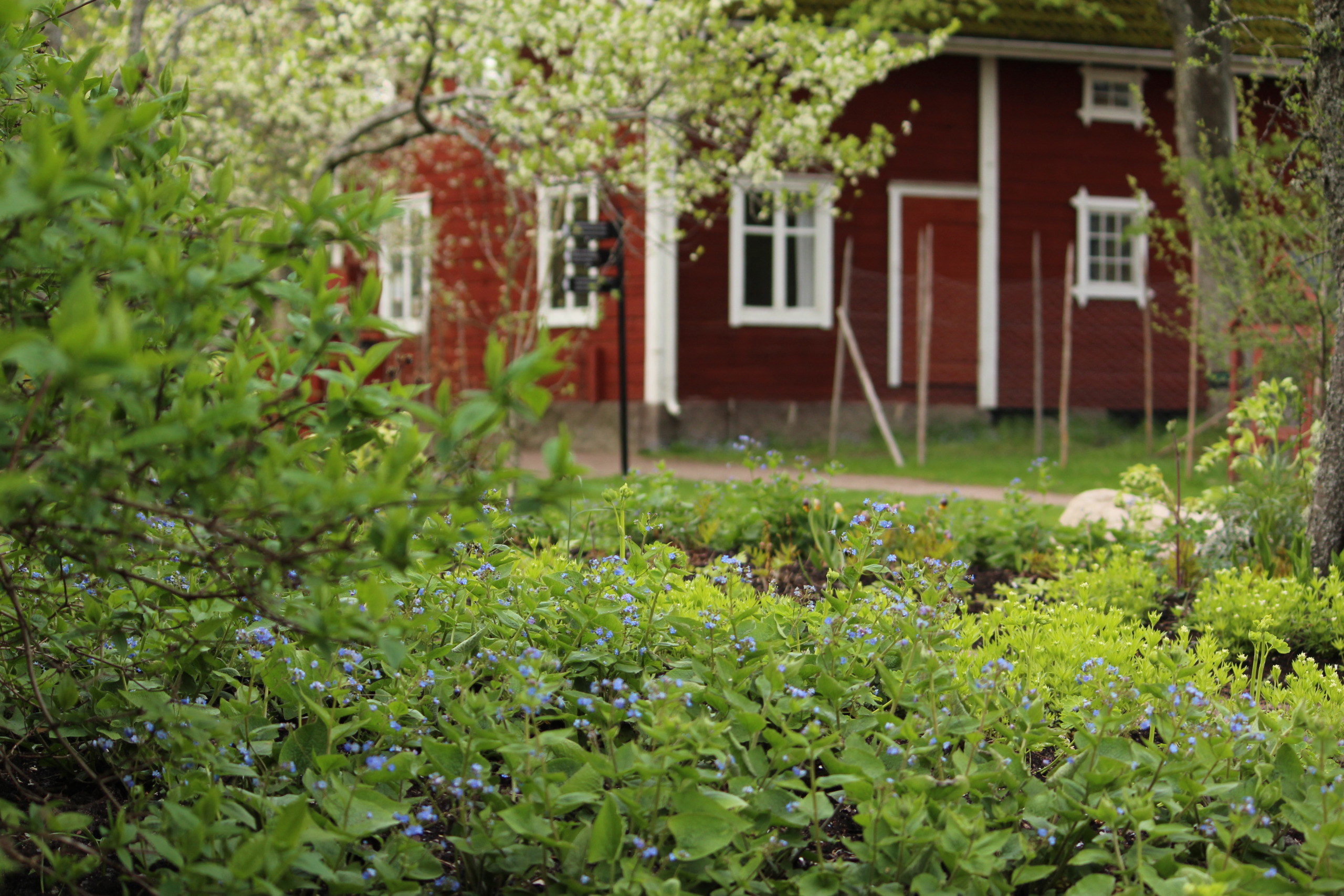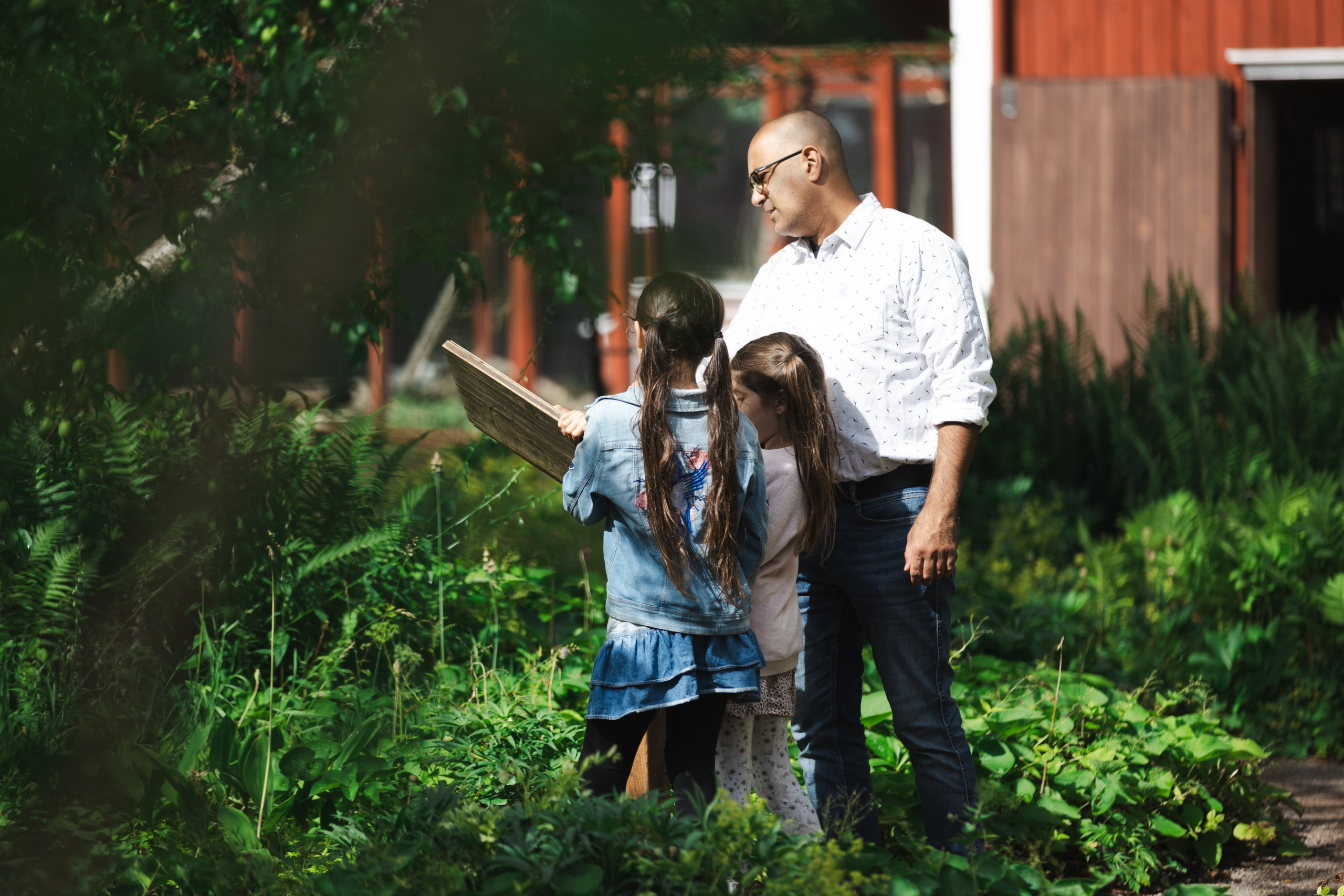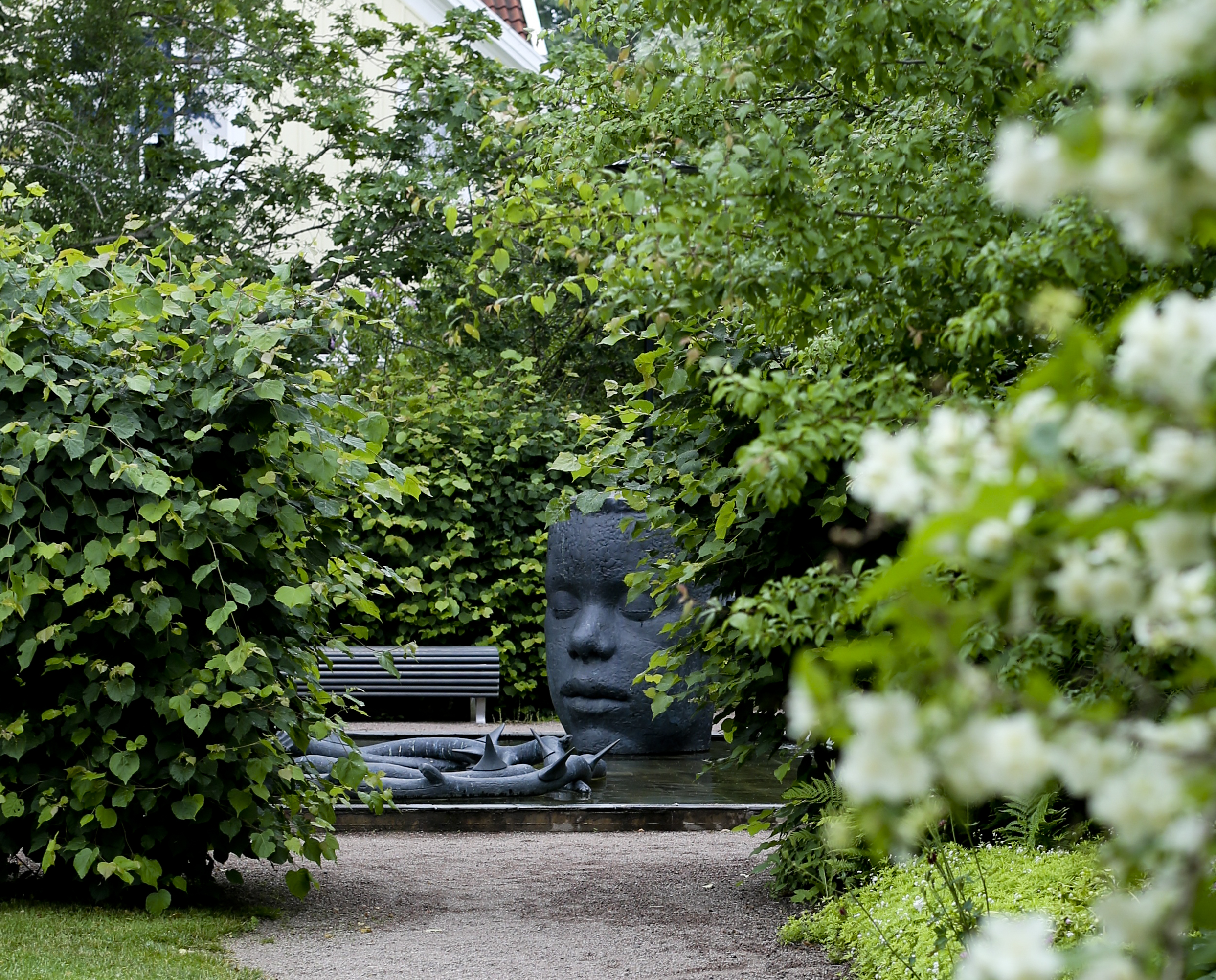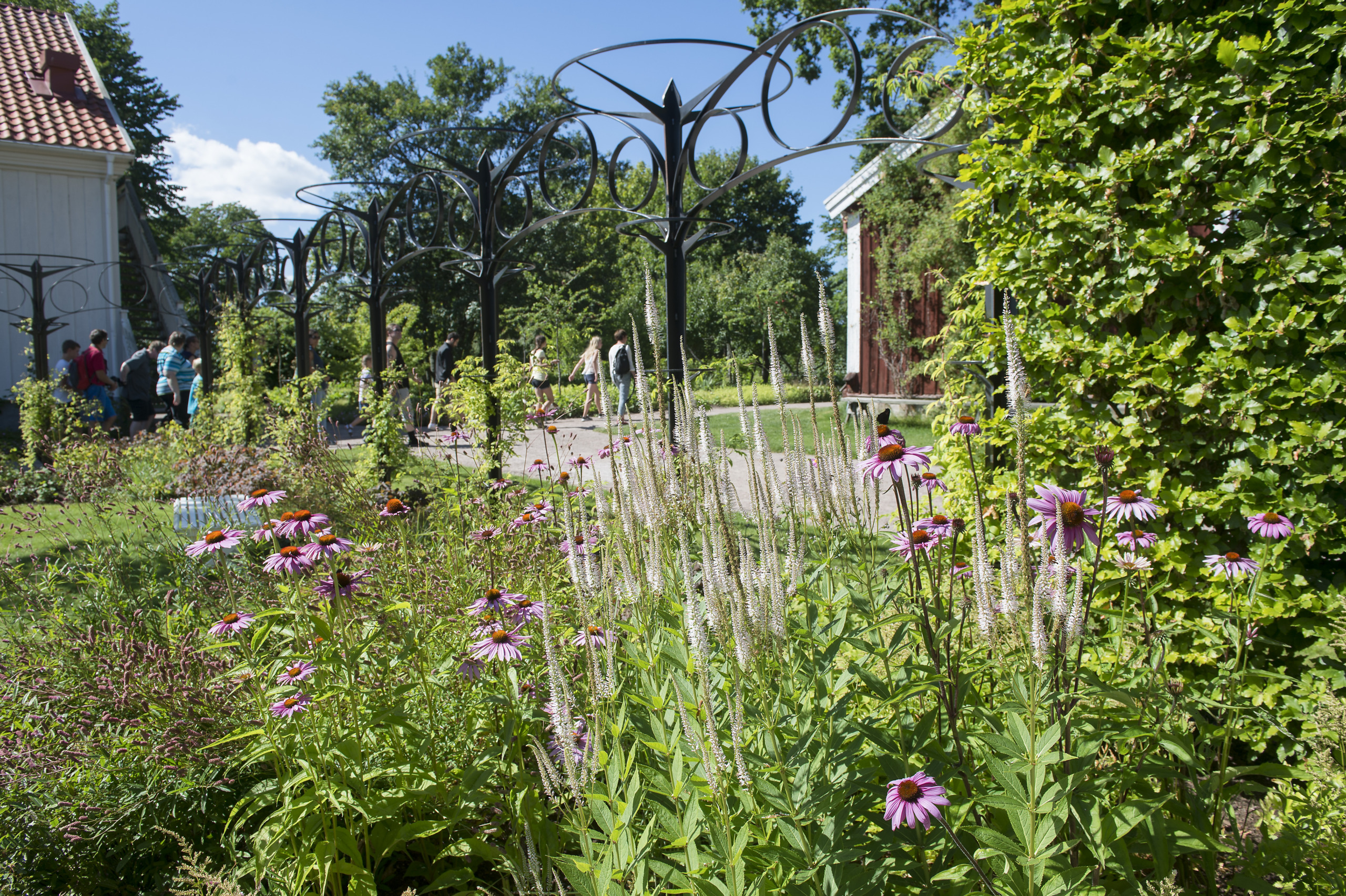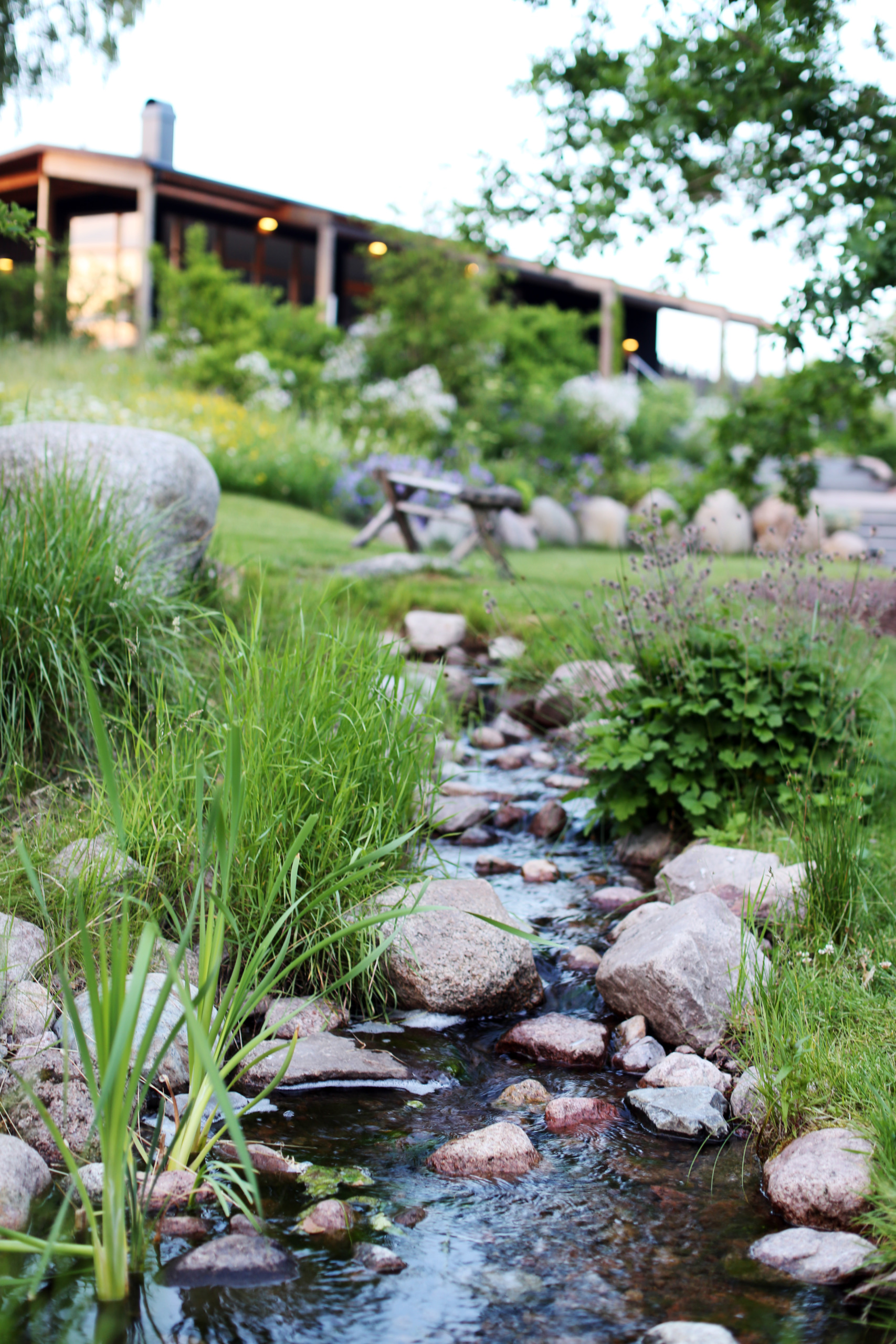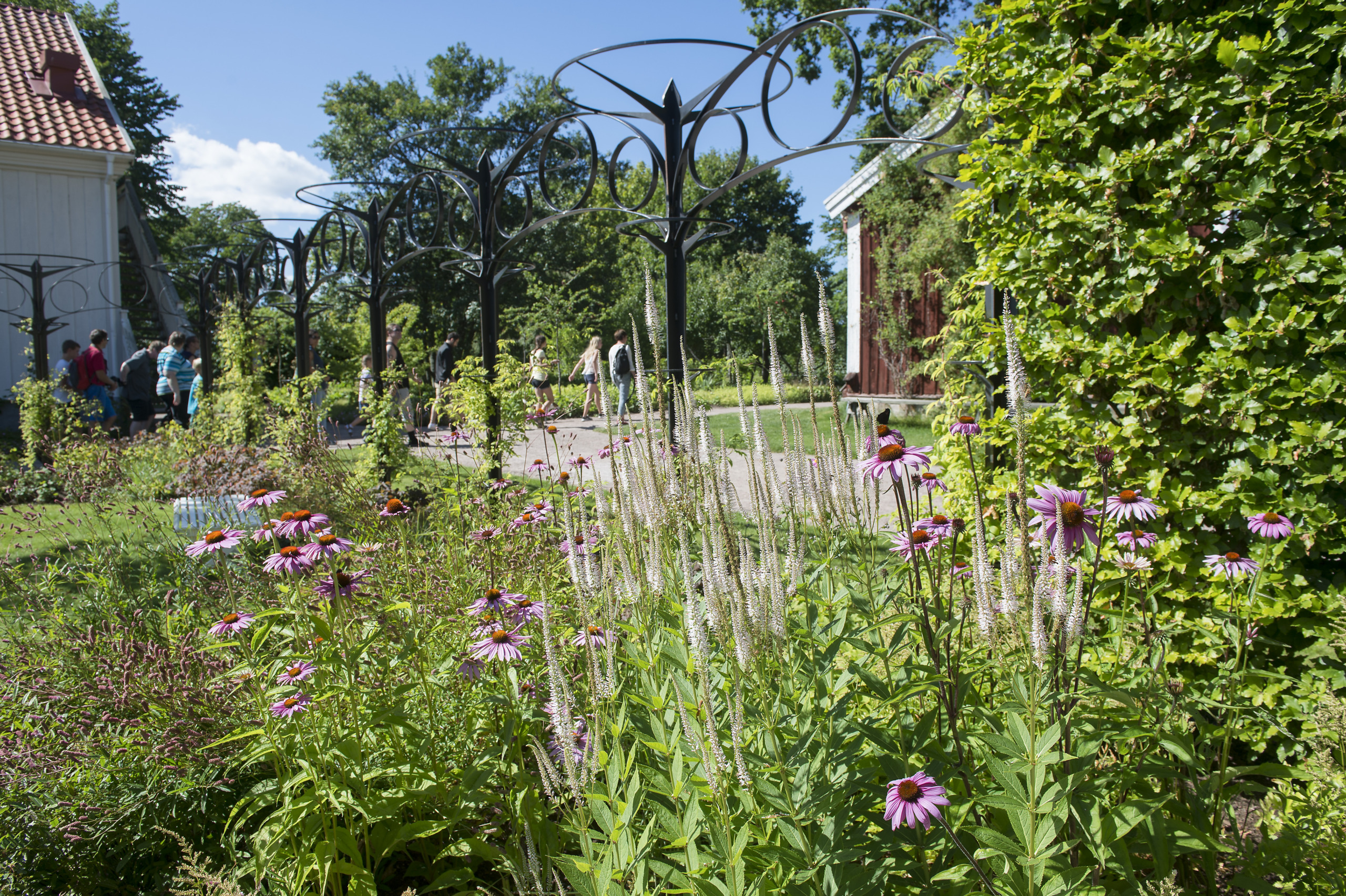
The first chapter
The first chapter of the gardens at Astrid Lindgren’s Näs links Astrid Lindgren’s childhood home with the exhibition pavilion and the old Vicarage. The spaces between the houses have become garden rooms, filled with plum trees, roses, games and mighty elms.
The childhood home garden
The childhood home is surrounded by a garden that has changed shape and content over the many years that the farm has been cultivated and used. Today it looks much the same as it did when Astrid Lindgren herself took over the house. The idea is to keep it that way. We cherish the simple beauty that lilacs, climbing roses, butterfly orchids and bleeding hearts give the garden.

Apellunden
Apellunden is the first garden room you encounter at Näs, taking its inspiration from the old Småland apple meadows. Apelunden is shaped to accommodate the restaurant’s outdoor seating. Apples and apple trees coexist with lush flower beds with species preferred by butterflies, and in the middle of all this there is room to sit down for lunch or something cool to drink.

Wild Rose Valley
Astrid Lindgren’s love of dog roses has characterised the entire rose garden at Näs. Wild rose bushes and climbing roses fill this space between the Vicarage and the exhibition pavilion. For a few intense weeks in July each year, the space is filled with a lovely scent of honey. Wild Rose Valley is a celebration of the wild and beautiful.

Plommonlunden
Between the Vicarage park and the old woodshed, a long time ago, there used to be both a kitchen garden and an orchard, where an old wild plum tree still stands. When it was decided to turn the site into a new garden space, plums became the theme. Plommonlunden can be seen as a small trace of a bygone style of garden at Näs.

The Vicarage park
Here we have a park that boasts centuries-old elms and beautiful hanging birch curtains. All this is framed by beech hedges, fences and an avenue of linden. The large open grassy areas in the park have been preserved to allow our visitors to sit down and rest, and to create a sense of airiness, but also to provide space for temporary outdoor exhibitions and art installations.
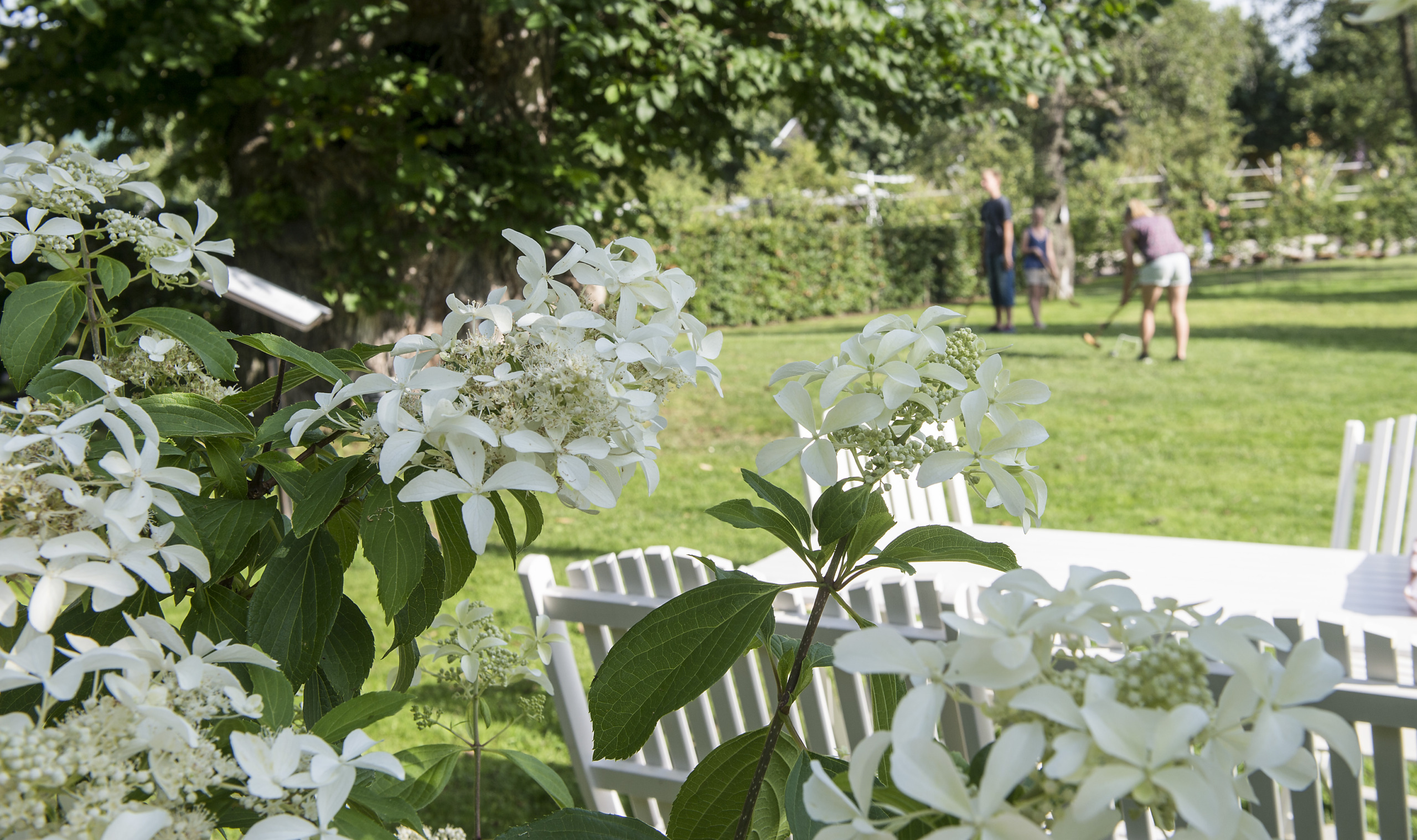

The lemonade tree – the pride of the park
At the bottom of one of the long sides of the Vicarage park stands a large elm. It is joined by two other elms that stand up by the Vicarage, but this one is special. It measures more than seven metres in circumference and is hollow. This is the tree that inspired Pippi Longstocking’s lemonade tree. When Astrid Lindgren herself was a child, the tree was called the owl tree because owls lived in it and hooted at night.
“The owl tree was the name of the old tree that overshadowed my entire childhood… Every time I see its rough trunk, I remember in my hands and feet the holds and protrusions you needed to climb it and how it felt under the soles of your feet.”
From ‘Samuel August från Sevedstorp och Hanna i Hult’ by Astrid Lindgren
Lekhagen
Here, behind the barns, children have always run and played, which is why we have made play its very own theme in this part of the garden. The place has been allowed to retain its wild and somewhat thorny character, to be permissive and exciting. There is nothing so fragile to worry about when the play becomes wild.
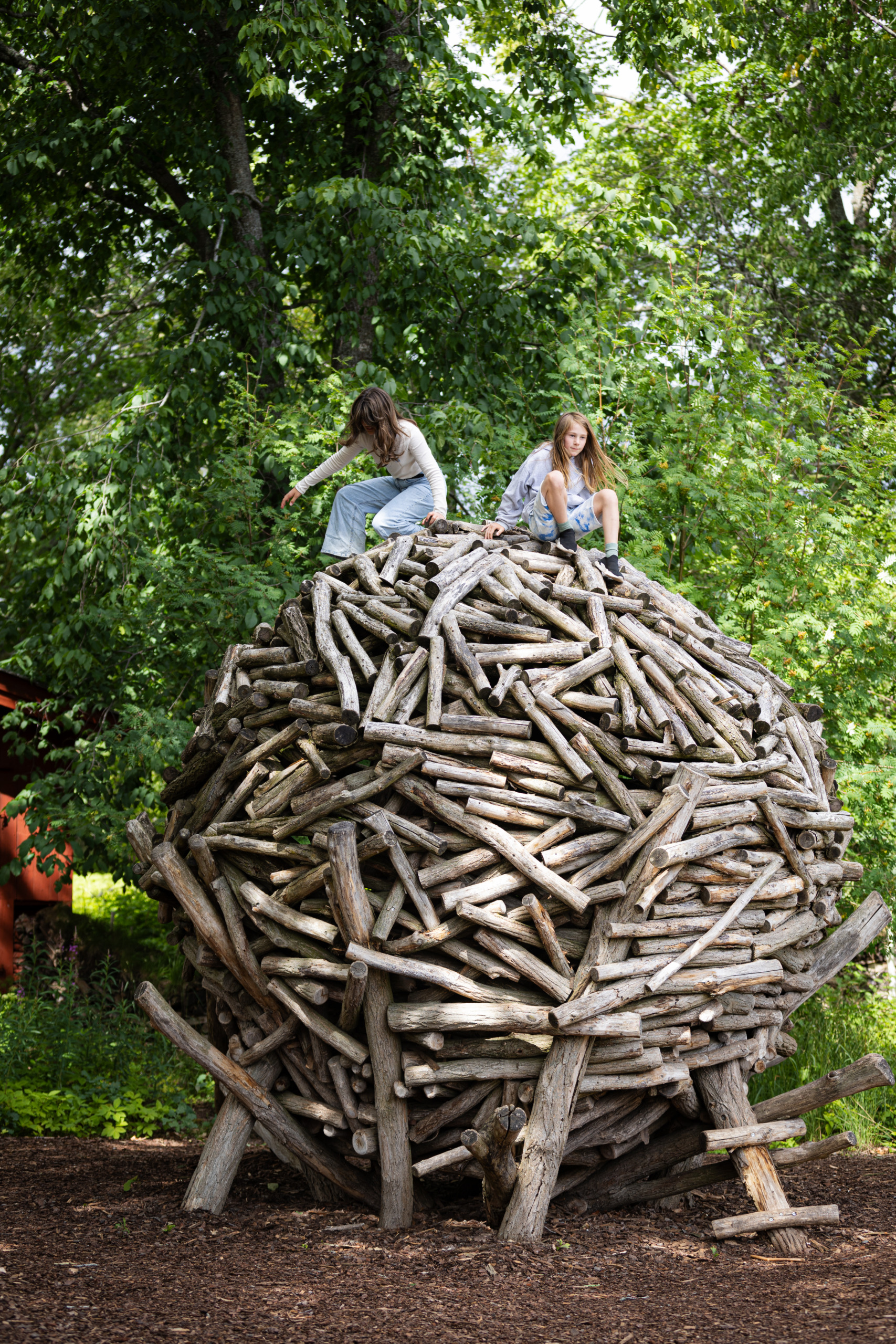
“How we played, my brother and sisters and I! From dawn till dusk. Tirelessly, full of excitement and joy, sometimes with our lives at risk – but that we didn’t understand. We climbed the tallest trees, we jumped between the timber piles up in the sawmill. We balanced along the ridge of our house – it was quite high and had we fallen, I’m afraid it would have been the end of our games. /…/ The games, yes how they filled our days! What would my childhood have been without them! What would any child’s childhood be for that matter, if there were no games in their lives?’
From ‘Samuel August från Sevedstorp och Hanna i Hult’ by Astrid Lindgren

‘A Soul in Flux’
Here and there in the garden you will find iron books to read. Together they form the story loop ‘A Soul in Flux’. Each book takes you deeper into the story of Näs farm and Astrid Lindgren’s strong connection to the place. An easy way for those who are curious to find out a little more.







